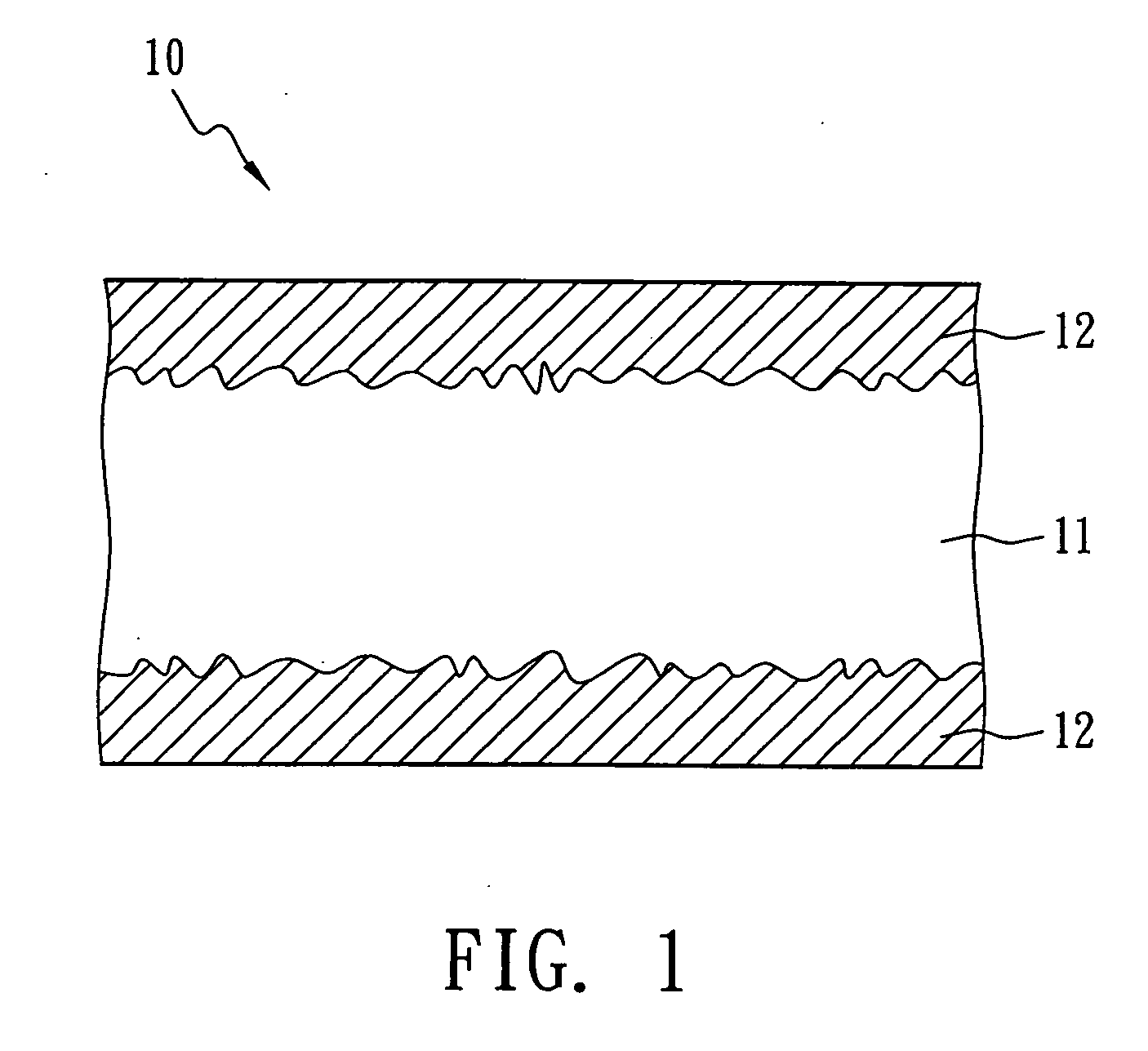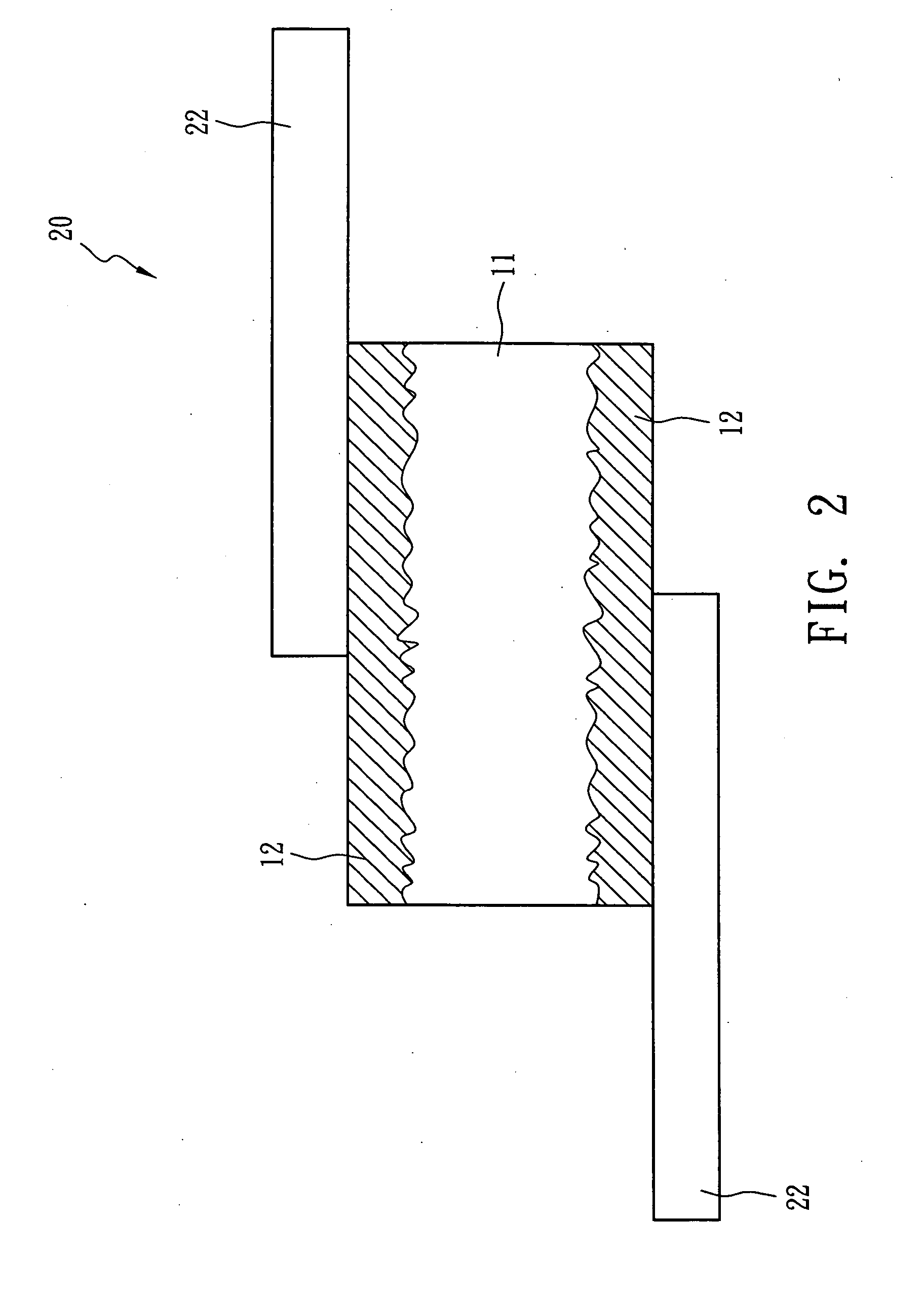Over-current protection device
- Summary
- Abstract
- Description
- Claims
- Application Information
AI Technical Summary
Benefits of technology
Problems solved by technology
Method used
Image
Examples
Embodiment Construction
[0022] The following will describe the compositions and the manufacturing process of two embodiments (i.e., Example I and Example II) of the over-current protection device of the present invention with accompanying figures.
[0023] The composition and weight (unit in grams) thereof of the PTC material layer in the over-current protection device of the present invention and a comparative example are shown in Table 1 below.
TABLE 1LDPE-1HDPE-1HDPE-2Mg(OH)2TiC(g)(g)(g)(g)(g)Example I12.660.50—6.0492.60Example II11.20——5.0493.60Comparative—3.1612.654.2090.90Example
[0024] In Table 1, LDPE-1 is a low-density crystalline polyethylene (density: 0.924 g / cm3; melting point: 113° C.); HDPE-1 is a high-density polyethylene (density: 0.943 g / cm3; melting point: 125° C.); HDPE-2 is a high-density polyethylene (density: 0.962 g / cm3; melting point: 131° C.); Mg(OH)2 is 96.9 wt % magnesium hydroxide mixed with 0.5% calcium oxide (CaO), 0.85% sulfamic acid (SO3), 0.13% silicon dioxide (SiO2), 0.03% i...
PUM
 Login to View More
Login to View More Abstract
Description
Claims
Application Information
 Login to View More
Login to View More - R&D
- Intellectual Property
- Life Sciences
- Materials
- Tech Scout
- Unparalleled Data Quality
- Higher Quality Content
- 60% Fewer Hallucinations
Browse by: Latest US Patents, China's latest patents, Technical Efficacy Thesaurus, Application Domain, Technology Topic, Popular Technical Reports.
© 2025 PatSnap. All rights reserved.Legal|Privacy policy|Modern Slavery Act Transparency Statement|Sitemap|About US| Contact US: help@patsnap.com



